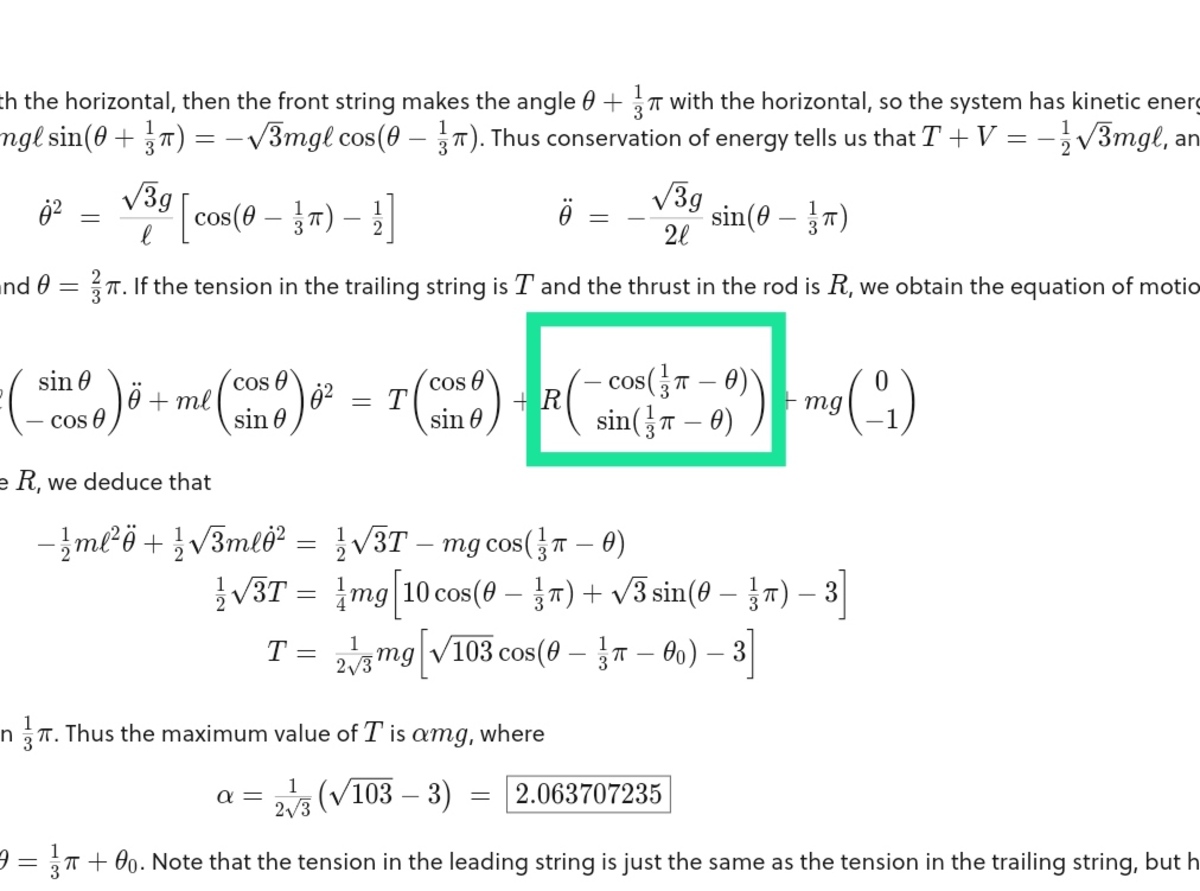Statics Exercise
A uniform, massive rod of length leans against a smooth, semi-circular support of radius . The semi-circular support is fixed in place.
One end of the rod is free, and the other end is positioned at a perpendicular junction between the wall and the floor, located away from the center of the semi-circular support. The wall and floor are smooth, and the end of the rod is not attached (fastened) to the wall or to the floor.
If the rod is in static equilibrium, determine the following ratio:
The answer is 0.6197.
This section requires Javascript.
You are seeing this because something didn't load right. We suggest you, (a) try
refreshing the page, (b) enabling javascript if it is disabled on your browser and,
finally, (c)
loading the
non-javascript version of this page
. We're sorry about the hassle.

Since the rod is not attached at the wall or floor, the wall and floor can supply forces but cannot supply moments. Therefore, we have three unknowns: the magnitude of the reaction force on the semi-circle, and the horizontal and vertical forces at the floor / wall junction. We can write three equilibrium equations (x, y, rotational) to find these quantities.
First, some geometry:
Simple right triangle geometry gives us the necessary angles for the problem. The diagram also shows the forces.
Horizontal equilibrium equation:
N c o s ( 6 0 ∘ ) = F x N = 2 F x
Vertical equilibrium equation:
N s i n ( 6 0 ∘ ) + F y = W ( 2 F x ) 2 3 + F y = W 3 F x + F y = W
Rotational equilibrium equation (with wall / floor junction as the reference point):
W 2 L c o s ( 3 0 ∘ ) = N 3 2 3 W = 2 3 F x F x = 4 W ⟹ F y = W ( 1 − 4 3 )
The ratio therefore works out to approximately 0 . 6 1 9 7